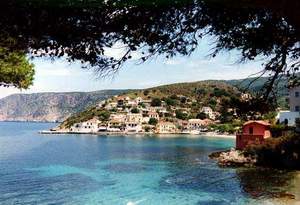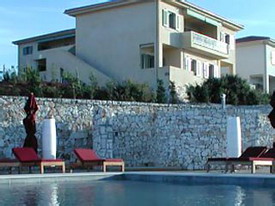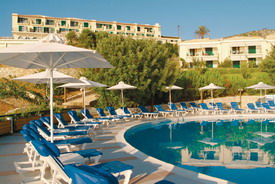
Kefalonia
In the area of Lassi, 2.5 kilometers from Argostoli, are the famous Katavothres, (swallow-holes) a rare geological phenomenon. Here sea water enters openings in the rock and "disappears". Only recently were scientists able to trace it; they found that it travels northeast underground all the way across the island finally to emerge at Melissani, near the village of Karavomilos, opposite Sami. (In the past, water poured in at such a rate it was used to power two enormous sea mills.)
Of the old, immensely attractive city of Argostoli, the capital which was destroyed by an earthquake in 1953, very little remains; one or two houses, the arched bridge stretching across the lagoon and the obelisk at its center, which commemorates the date of its construction. During your stay there you could visit its interesting museums (Archaeological Museum: tel.: 28300; Folk Art Museum: tel.: 28835), its Library: tel.: 28221 and swim at the famous nearby beaches of Makris and Platis Gialos.
Lixouri, Cephalonia's second largest town, has a peaceful atmosphere, a lovely 19th century mansion-museum, and vestiges of the ancient city of Pali. The beaches to the south are among the best of the island.
South of Argostoli near the village of Domata lies the Church of Panagia with an exceptional carved wooden icon screen. NE of Domata the Monastery of Agios Andreas near the village of Peratata has a wonderful icon collection. Above the monastery looms the Castle of St. George built by the Venetians in 1504. Within its walls there is a small piazza, the Kanoni, and north of it the ruins of the Catholic church of St. Nicholas. The view of the fertile valley and its villages spread out below the castle is splendid.
The area of Katelios in the southeast of the island, has two outstanding beaches, one near the seaside hamlet of Katelio and the other at Skala. In this area were discovered the ruins of a 3rd century B.C. building from the height of the Roman era, perhaps the home of a wealthy Roman businessman, which contains excellent, well-preserved mosaics.
On the east side of the island are Poros, Sami and Agia Efimia with its pebbled beaches.
Fiskardo, the northernmost harbor on Cephalonia, has kept its traditional color. Lying opposite and very close to Ithaca, it is surrounded by a thick cypress glade.
On the west side of the island is Assos, a charming village built astride the isthmus of the peninsula of the same name, famous for its picturesque castle.
The good road network, which covers the whole island, makes it easy to explore Cephalonia from one side to the other; its deep blue waters, steep bare cliffs, lush valleys, picturesque, secluded villages.
|











